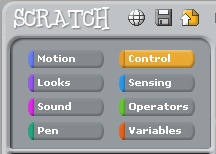Who ya gonna call? This week we tackled the Ghostbusters game from Code Club level 1 projects. I slated it for this week since we met just before Halloween. I gave them a bit of leeway on following the project to the letter and let them pick any ghost sprite, and use any sound. Most of the issues we encountered this time were same as the ones we encountered last week – generally there were issues locating specific code blocks and difficulties following directions specifically enough for the game to work.

But they pick this stuff up so fast and make sense of it, too. It is amazing. Some of them are starting to know where they can make their own changes without affecting the game play or where their changes actually can make the game better.
My plan for Code Club this week was to start off reflecting on last week’s learning project and see how everyone felt Code Club was going. As much as I understand the importance of reflection, I don’t always take the time to let the students reflect. This week, though, I wanted to hear their thoughts on how the first learning project went. Unfortunately, reflection time at the beginning, during snack, was derailed a bit by the general, insuppressible excitement level of the students, something that I had been noticing all day – probably due to a trifecta of events this week: Open House last night, indoor recess due to rain that day, and the anticipation of Halloween on Friday. There was nothing to do but move on to the main event: Coding!
I felt a bit more prepared this time as I had just walked through the Ghostbuster project with a couple of students earlier during indoor recess. It really helps to actually work your way through a project, or help someone work their way through one. It is a different level of understanding than just reading through it. (Shocker)
When we came to the part to add a sound to the game when you score a point, I did fuel the fire of their enthusiasm by bringing out two microphones and letting the students record their own sounds. Recording from microphones worked surprisingly well despite the noise level of 22 students working in Scratch in an after-school setting.
For their final independent project, I will want them to create all of their own sounds, sprites and backgrounds. I may have to scrounge up another microphone or create a schedule for their use.
Boy was it hard to stop at 4:15








